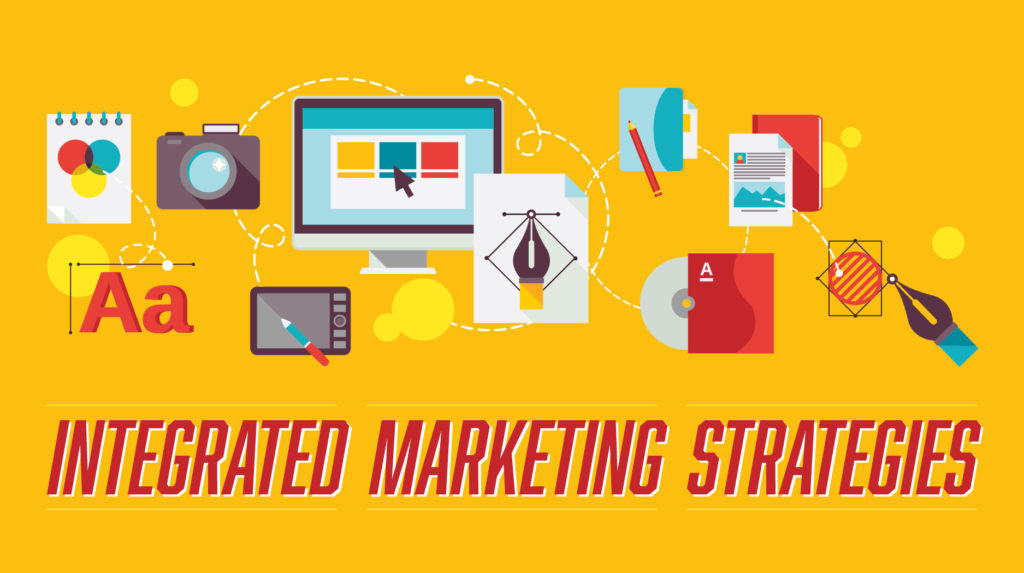Table of Contents
Let’s be honest: marketing can feel like a giant jigsaw puzzle.
You’ve got your blog over here, your Instagram popping off, an email campaign running, and maybe a few Google Ads sprinkled in. But if all these pieces aren’t working together? You’re just busy, not effective.
That’s where an integrated marketing strategy comes into play. Think of it as your master blueprint. It connects everything—your messaging, your visuals, your platforms—into one powerful, consistent experience that actually moves the needle.
In this post, we’ll break down exactly what an integrated marketing strategy is (in plain English), why it’s a total game-changer, and how to build one that works without the overwhelm.
So, What Is an Integrated Marketing Strategy?
Great question.
An integrated marketing strategy is when all your marketing—emails, social media, website content, paid ads, even your offline stuff—work in harmony. They’re singing the same song, with the same message, and the same goals.
Instead of your blog saying one thing, your ad saying another, and your email saying something completely different, everything clicks together. Your audience doesn’t just hear from you once—they experience you from all sides, and it all makes sense.
It’s marketing with a plan, not just a bunch of random tactics.
Why You Need an Integrated Marketing Strategy (Like, Yesterday)
Ever seen a brand that feels totally polished, like they’re everywhere at once? That’s no accident. It’s strategy.
Here’s why having an integrated marketing strategy is a no-brainer in 2025:
1. Consistency Builds Trust
If your branding feels different on every platform, people notice. And they don’t buy from brands they don’t trust. When you show up consistently, you become familiar—and familiarity builds confidence.
2. More Bang for Your Buck
Let’s say you write one awesome blog post. Why not turn that into 3 Instagram posts, 2 emails, a YouTube video, and a carousel ad? An integrated strategy helps you stretch your content further and avoid burnout.
3. Better Results, Faster
When everything supports the same message, you’re not just reaching people—you’re reinforcing your story at every turn. That’s how you boost engagement, get more leads, and make more sales.
4. Your Team Works Smarter
When everyone knows the plan, things run smoother. No more “what campaign is this again?” Slack messages. Your content creators, designers, and marketers all speak the same language.
What Makes a Strong Integrated Marketing Strategy?
It’s not just about posting the same thing everywhere. A good integrated marketing strategy blends flexibility with structure. Here’s what you’ll need:
One Clear Message
Whether someone sees your ad, reads your blog, or opens your email—they should get the same core message. Not copy-paste, but the same vibe and value.
Know Your Audience
What platforms do they use? What do they care about? What keeps them up at night? The more you know, the better you can reach them in a way that feels personal.
Choose the Right Channels
Don’t try to be everywhere just to check a box. Be where it matters. Focus your energy on the platforms your audience actually uses—and tailor your content to each one.
Unified Visuals & Voice
Your tone, colors, fonts, and overall vibe should feel cohesive. If someone jumps from your Instagram to your website, it should feel like a continuation—not a completely different brand.
Building Your Integrated Marketing Strategy (Step-by-Step)
Let’s keep this simple. You don’t need a 50-page deck to get started.
Step 1: Define Your Goal
What are you trying to achieve? More leads? Product sales? Brand awareness? Get crystal clear here. Your whole strategy depends on this.
Step 2: Pick a Core Message
What’s the big idea behind this campaign? Maybe it’s “Our skincare is 100% clean and cruelty-free.” Everything you create should support that message.
Step 3: Choose Your Channels Wisely
Pick 3–5 platforms where your audience hangs out. Maybe that’s Instagram, email, your blog, and a podcast. Each platform will get a tailored version of your message.
Step 4: Create Once, Repurpose Smart
Say you host a webinar. That can turn into:
- A blog post
- 5 social clips
- Email follow-up series
- An infographic
- A YouTube tutorial
That’s the power of an integrated marketing strategy—one idea, many forms.
Step 5: Launch With a Plan
Don’t just hit “post” and hope for the best. Use a calendar to schedule your rollout. Make sure everything—from your tweets to your banner ads—is part of the big picture.
Step 6: Track and Tweak
What’s getting clicks? What’s getting crickets? Use tools like Google Analytics, HubSpot, or even Instagram Insights to monitor performance. Tweak as needed.
Real Example: How Airbnb Nails It
Airbnb’s campaigns are a masterclass in integrated marketing. When they promote a new feature (like flexible dates), you’ll see:
- A sleek landing page
- Social media countdowns
- Email announcements
- PR stories in travel blogs
- Matching visuals and messaging everywhere
Whether you’re reading the news or scrolling TikTok, it all feels like one big, beautiful campaign. That’s what an integrated marketing strategy looks like in action.
Common Mistakes to Avoid
You don’t need to be perfect—just consistent. But here’s what to watch out for:
- Inconsistent messaging: If your Facebook ad says one thing and your landing page says another, people will bounce.
- Too many channels: Don’t spread yourself thin. Focus on quality over quantity.
- No core message: Without one central idea, your strategy will feel scattered.
- Skipping analytics: If you’re not measuring, you’re guessing.
Final Thoughts: It’s Time to Stop Marketing in Silos
You’ve probably heard the phrase, “Work smarter, not harder.” Well, an integrated marketing strategy is how you do that in the marketing world.
Instead of chasing separate goals for every channel, you’re connecting the dots. Your content flows. Your message resonates. Your brand grows stronger with every click, view, and share.
So take the time to map out your strategy. Get your team aligned. And remember: marketing is about connection—and an integrated approach makes that connection feel effortless.

